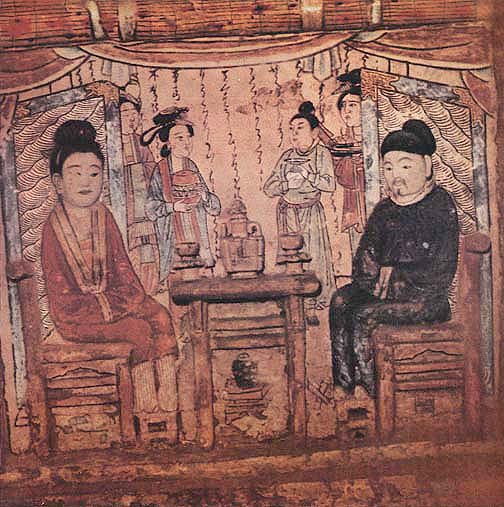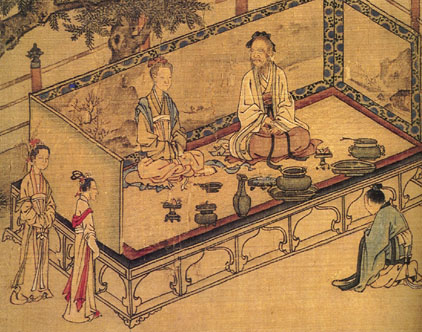|
The unit on Painting, especially the section on Painting as a Social Record, included many paintings from the Song and Yuan period that show how people of various statuses dressed. Below are a few of those illustrations, supplemented with some later ones.
What are the main differences in how men and women dress?
What do you interpret as differences based on wealth, status, or occupation?
Do you notice any major changes in the style of dress over time?
|
|||||

What levels of social status are represented in this scene? Which aspects of the garments give you clues to status? |
|||||
|
|||||

How are the men and women distinguished in this scene? |
|||||
|
Eleventh century tomb wall painting
|
|||||

Would you have known these men were literati even if they did not hold brushes or documents? |
|||||
|
|||||

What do you notice about sleeves in this scene?
How is color used in these people's garments? |
|||||
|
Detail from Ma Hezhi, Classic of Filial Piety (12th c)
|
|||||

|
How do the clothing of these two pairs compare to what we have seen above? | ||||

|
|||||
The Night Revels of Han Xizai, attributed to Gu Hongzhong, detail (12th c)
|
Yuan wall painting
|
||||
|
What seems to be the status of the people in the illustration below? |
|||||
|
|
|||||
|
|||||
|
During Ming and Qing times, a conspicuous feature of official dress was the use of rank badges. Different birds or animals indicated the rank of the official in the civil or military hierarchy. |
|||||
|
Ming portrait of Jiang Shunfu
|
|||||

Take a closer look at the badge on his garment. Also note the subtle patterning of the black silk. Does anything else besides the badge add distinction to his costume?
|
|||||
|
Ming portrait of Jiang Shunfu, detail
|
|||||

Sometimes the badges were made using gold thread for the background. |
|||||
|
|||||
|
Move on to Evidence from Photographs |
|||||


